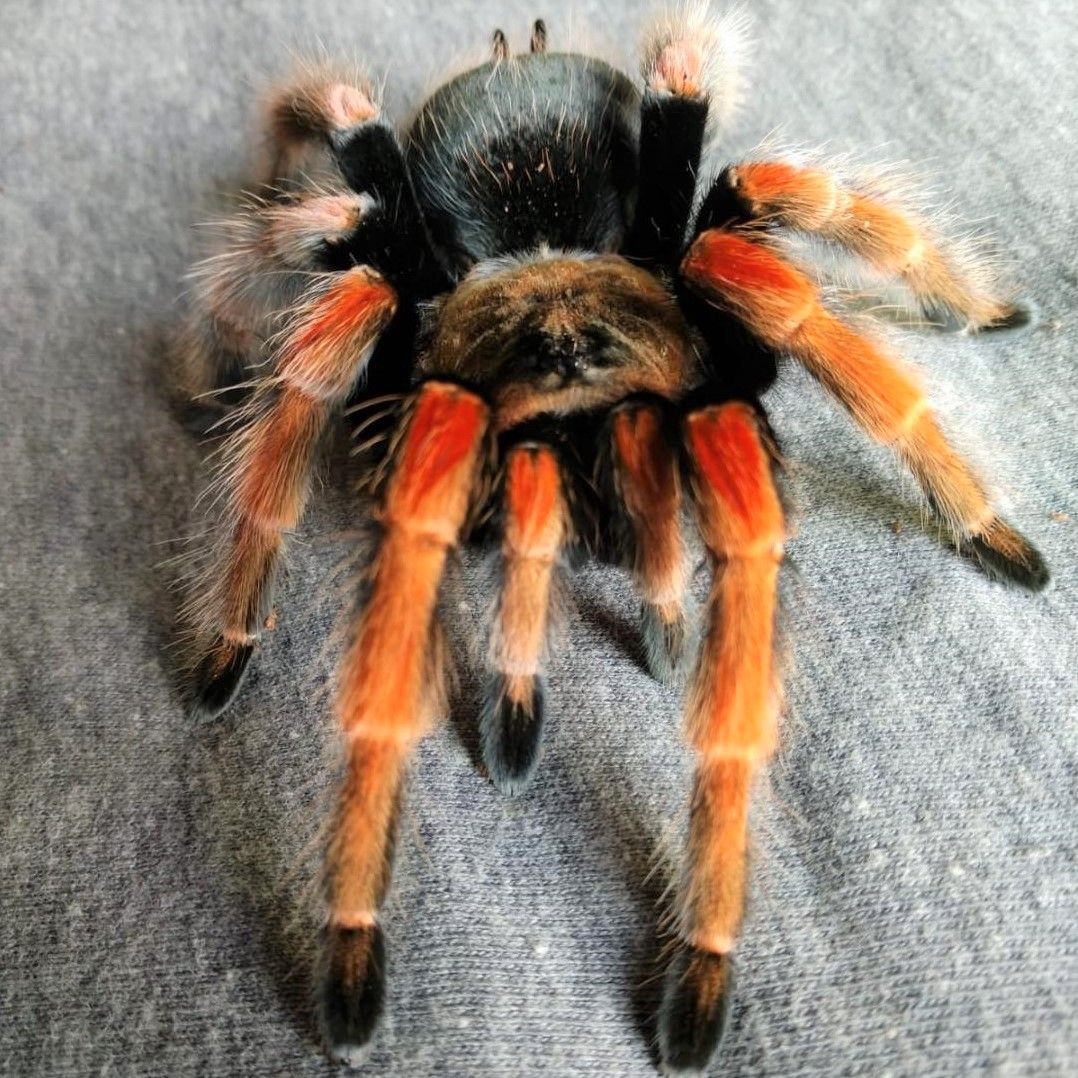Profile | Phoenix

-
BirthdayFemale, born circa 2012–2016
-
SpeciesMexican fire-legged tarantula
Brachypelma auratum -
Professor ofHair tossing
-
Field of StudyExoskeletons and fangs
-
Food and Vet Care$24 per month | $288 each year
About the species
RANGE | These spiders inhabit the dry thorn forest of the Pacific coast of southern Mexico (southeastern Michoacan to northwestern Guerrero). It is a fossorial (burrowing) species that lives in burrows in thorny brush thickets and under large rocks.
FUN FACTS | These amazing tarantulas got their name because they have bright orange and black hairs. Tarantulas are spiders but not all spiders are tarantulas! There are roughly 700 different species of spiders. Arachnids are a group of 8-legged animals that include spiders and scorpions and are predators that mostly eat insects. These invertebrates rely on their exoskeleton for protection and muscle support. When they feel threatened, like many plants and some caterpillars, they rely on their bristle-like hairs, called uriticating hairs, that cause a variety of responses that include redness and swelling, itching and inflammation and even breathing or sight issues. They have movable fangs above their mouth- called chelcicerae- that are hollow and inject venom into their prey, typically immobilizing the animal. Their mouth is a straw-shaped tube so most food must be pre-digested by coating prey with digestive juices that are also secreted from the chelcicerae before they are sucked up by the mouth. These small animals hunt and eat insects and rodents which consume and contaminate our food supply as well as carry diseases that make animals and people very sick.
Meet Phoenix
Phoenix was previously owned as a pet. A parent bought the spider for her kids, thinking it would be a good “starter pet” that would be easier than a dog or cat. However, after repeatedly finding the tarantula without food and water, she decided the kids were not ready to care for an animal, and it was time to find the tarantula a new home. Luckily, we were ready to care for her!
Phoenix is especially intrigued by things that are up high, which is unusual for a burrowing spider. So, we hang toddler keys, toys and window clings for her to explore on the wall of her enclosure!
Likes
She is usually curious when we hang small baby toys on the wall of her enclosure, climbing the wall to investigate things like rattles and plastic keys. We have seen our tarantulas push small balls—ping pong ball sized—across their enclosure. She is intrigued by reptile hides where she can crawl under and over, natural behaviors for this species. She likes to climb fake plants and small structures that might typically be added to aquariums since they are the perfect size for this small creature
Wishlist
-
Plastic balls and chainswhiffle balls of different sizes, and plastic chains to hang things on and climb
-
Reptile hidesdesigned for small reptiles, as well as small-animal loungers made of rope, rock, cloth, etc.
-
Stuffed animalsespecially items she can crawl through
-
Toddler toysplastic whiffle balls, bath toys, and learning toys with different shapes and textures on blocks, beads, and balls that move on plastic-coated wires or frames, especially those she can crawl through
-
Water toysChildren’s bath toys like rubber ducks